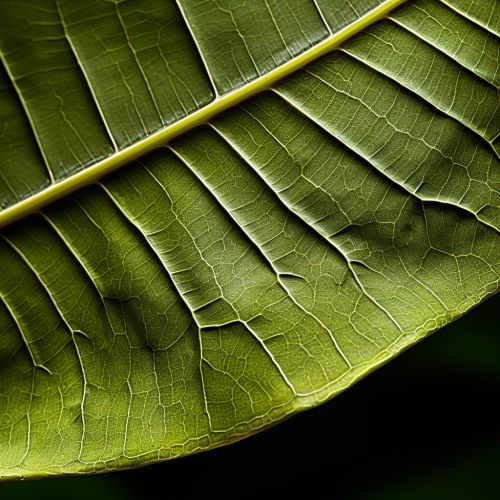Leaf modification
Introduction
Leaf modification refers to the structural changes that occur in the leaves of a plant to perform functions other than photosynthesis. These modifications can be a result of the plant's adaptation to its environment, or its need to fulfill specific functions such as protection, storage, or reproduction. The study of leaf modifications is a significant aspect of botanical research, as it provides insights into the plant's survival mechanisms and evolutionary adaptations.


Types of Leaf Modifications
There are several types of leaf modifications, each serving a unique function. These include:
Tendrils
Tendrils are slender, coiling structures that help the plant to climb or provide support. They are commonly found in climbing plants such as peas and grapes. Tendrils can be modified leaves, leaflets, or even parts of a leaf.
Spines
Spines are sharp, pointed structures that serve to protect the plant from herbivores. They are commonly found in cacti and other desert plants. Spines are modified leaves, and their primary function is to conserve water by reducing the surface area of the leaf.
Bracts
Bracts are leaf-like structures that surround the flower or inflorescence of a plant. They often differ in color and size from the plant's regular leaves and can be quite showy, serving to attract pollinators. Examples of plants with bracts include the poinsettia and the dogwood.
Phyllodes
Phyllodes are flattened leaf stalks that take over the function of the leaf blade. They are commonly found in arid environments where they help to reduce water loss. An example of a plant with phyllodes is the Acacia.
Bulbs
Bulbs are modified leaves that store food and water. They are typically found underground and serve as a survival mechanism for the plant during unfavorable conditions. Examples of plants with bulbs include onions and tulips.
Functions of Leaf Modifications
Leaf modifications serve a variety of functions in plants, including:
Protection
Some leaf modifications, such as spines and thorns, serve to protect the plant from herbivores and other threats. These structures are often sharp and can deter animals from feeding on the plant.
Support
Leaf modifications such as tendrils provide support to the plant, allowing it to climb or anchor itself to a support. This can be particularly useful for plants in dense vegetation where competition for sunlight is high.
Storage
Some leaf modifications, such as bulbs and succulent leaves, serve as storage organs for the plant. They store food, water, or both, allowing the plant to survive in harsh conditions or during periods of scarcity.
Reproduction
In some plants, leaf modifications can play a role in reproduction. For example, in plants such as the African violet, leaf cuttings can develop into a new plant.
Evolution of Leaf Modifications
The evolution of leaf modifications is a fascinating area of study in botany. It is believed that these modifications have evolved as a response to the plant's environment and survival needs. For example, plants in arid environments have developed modifications such as spines and phyllodes to conserve water. Similarly, climbing plants have developed tendrils to help them reach sunlight in dense vegetation.
Conclusion
Leaf modifications are a testament to the adaptability and resilience of plants. They serve a variety of functions, from protection and support to storage and reproduction, and are a key factor in the plant's survival and success. The study of leaf modifications not only provides insights into the plant's evolutionary history but also has potential applications in agriculture and horticulture.
